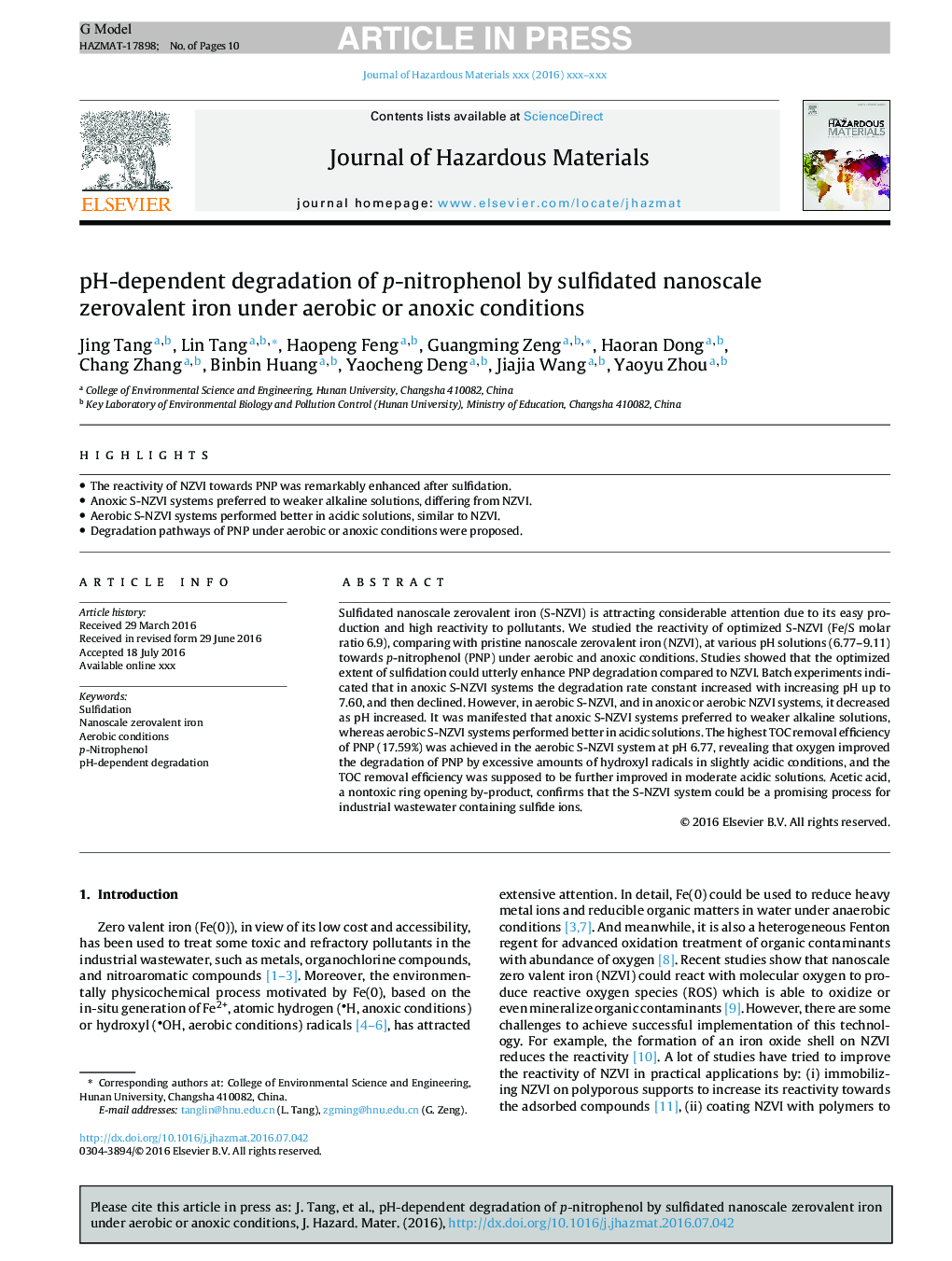| Article ID | Journal | Published Year | Pages | File Type |
|---|---|---|---|---|
| 6969750 | Journal of Hazardous Materials | 2016 | 10 Pages |
Abstract
Sulfidated nanoscale zerovalent iron (S-NZVI) is attracting considerable attention due to its easy production and high reactivity to pollutants. We studied the reactivity of optimized S-NZVI (Fe/S molar ratio 6.9), comparing with pristine nanoscale zerovalent iron (NZVI), at various pH solutions (6.77â¿¿9.11) towards p-nitrophenol (PNP) under aerobic and anoxic conditions. Studies showed that the optimized extent of sulfidation could utterly enhance PNP degradation compared to NZVI. Batch experiments indicated that in anoxic S-NZVI systems the degradation rate constant increased with increasing pH up to 7.60, and then declined. However, in aerobic S-NZVI, and in anoxic or aerobic NZVI systems, it decreased as pH increased. It was manifested that anoxic S-NZVI systems preferred to weaker alkaline solutions, whereas aerobic S-NZVI systems performed better in acidic solutions. The highest TOC removal efficiency of PNP (17.59%) was achieved in the aerobic S-NZVI system at pH 6.77, revealing that oxygen improved the degradation of PNP by excessive amounts of hydroxyl radicals in slightly acidic conditions, and the TOC removal efficiency was supposed to be further improved in moderate acidic solutions. Acetic acid, a nontoxic ring opening by-product, confirms that the S-NZVI system could be a promising process for industrial wastewater containing sulfide ions.
Keywords
Related Topics
Physical Sciences and Engineering
Chemical Engineering
Chemical Health and Safety
Authors
Jing Tang, Lin Tang, Haopeng Feng, Guangming Zeng, Haoran Dong, Chang Zhang, Binbin Huang, Yaocheng Deng, Jiajia Wang, Yaoyu Zhou,
